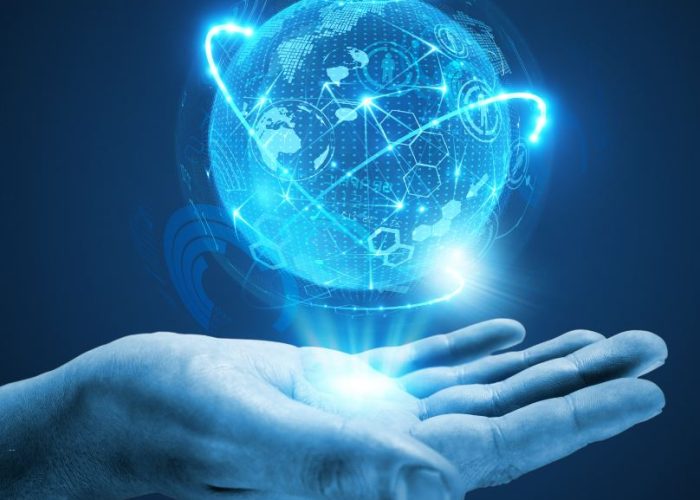
25 Feb TRENDING IoT TECHNOLOGIES 2023
The Internet of Things, or IoT, refers to the network of physical devices, vehicles, buildings, and other items embedded with electronics, software, and sensors that enable them to connect and exchange data. These devices can be anything from a simple temperature sensor to a complex industrial machine, and they are all connected to the internet, allowing them to communicate and exchange data.
The importance of IoT technology cannot be overstated. It is revolutionizing the way we live and work, from smart homes and buildings to healthcare and fitness, and from transportation to industrial automation. IoT is also playing a crucial role in the creation of smart cities, where everything from traffic lights to water systems is connected and optimized for efficiency and sustainability.
The history of IoT technology can be traced back to the early days of the internet, when the first connected devices were created. However, it wasn’t until the late 1990s and early 2000s that the term “Internet of Things” was coined, and the technology began to take shape. Since then, the development of IoT has been rapid, with new devices and applications being created every day.
How IoT Technology Works
IoT technology is based on the idea of connecting devices and sensors to the internet, allowing them to communicate and exchange data. These devices and sensors are often small, low-power, and inexpensive, and they can be embedded in a wide range of objects, from appliances and vehicles to industrial machines and buildings.
The communication protocols used in IoT vary depending on the application and the devices involved. Some common protocols include Bluetooth, Zigbee, and Z-Wave for short-range communication, and cellular, LoRa, and Sigfox for long-range communication.
The infrastructure of IoT technology is made up of three main components: devices and sensors, gateways, and the cloud. Devices and sensors collect data and send it to the gateways, which act as a bridge between the devices and the cloud. The cloud is where the data is stored, analyzed, and used to create insights and actions.
Applications of IoT Technology
IoT technology has a wide range of applications, and it is being used in many different industries and sectors. The following are some of the most popular applications:
Smart homes and buildings
IoT technology is being used to create smart homes and buildings, where everything from lighting and heating to security and energy management is connected and can be controlled remotely.
Healthcare and fitness
IoT technology is being used to create wearables and other devices that can track and monitor health data, such as heart rate and activity levels. This data can be used to improve fitness, monitor chronic conditions, and even detect potential health problems.
Industrial IoT and manufacturing
IoT technology is being used in industrial settings to improve efficiency and productivity. For example, IoT-enabled machines and equipment can be connected and monitored in real-time, allowing for predictive maintenance and reducing downtime.
Automotive and transportation
IoT technology is being used to create connected cars and other vehicles, which can communicate with each other and with traffic infrastructure to improve safety and efficiency.
Challenges and Limitations of IoT Technology
Despite its many benefits, IoT technology also comes with a number of challenges and limitations. Some of the most significant include:
Security and privacy concerns: As more and more devices are connected to the internet, the risk of hacking and other security breaches increases. Personal data and other sensitive information can be vulnerable to hacking and other types of cyberattacks, which can result in serious consequences.
Interoperability issues: Because different devices and sensors use different communication protocols, it can be difficult to get them all to work together seamlessly. This can result in a lack of standardization and can make it difficult to create cohesive systems.
Scalability and reliability: As more and more devices are connected to the internet; the amount of data being generated can become overwhelming. It can be difficult to store, analyze, and make sense of all this data, especially as the number of connected devices continues to grow.
Battery life and power management: Many IoT devices are battery-powered, which can be a challenge when it comes to power management. It can be difficult to create devices that have long battery life and can be easily recharged or replaced.
Standardization and regulation: There is currently a lack of standardization and regulation when it comes to IoT technology. This can make it difficult to create cohesive systems and can also result in confusion for consumers and businesses.

Future of IoT Technology
The future of IoT technology is bright, and there are many exciting advancements and research currently underway. The following are some of the most promising developments:
Advancements in technology
There are many new technologies currently being developed that will help to improve the performance and functionality of IoT devices. For example, the development of 5G&6G networks and the increasing use of artificial intelligence and machine learning will help to improve connectivity and data analysis.
Predictions for future IoT applications
The potential applications of IoT technology are endless, and we can expect to see it used in many new and exciting ways in the future. For example, it's likely that we'll see more and more use of IoT technology in the retail, banking, and healthcare industries.
Impact on society and the economy
IoT technology is likely to have a significant impact on society and the economy in the future. It is expected to create new jobs and industries, and to improve efficiency and productivity across many sectors.
Conclusion
IoT technology is rapidly changing the way we live and work, and it has the potential to revolutionize many industries and sectors. While there are certainly challenges and limitations to overcome, the benefits of IoT technology far outweigh the drawbacks. As technology continues to advance and new applications are developed, we can expect to see IoT technology play an increasingly important role in our lives and in the global economy.